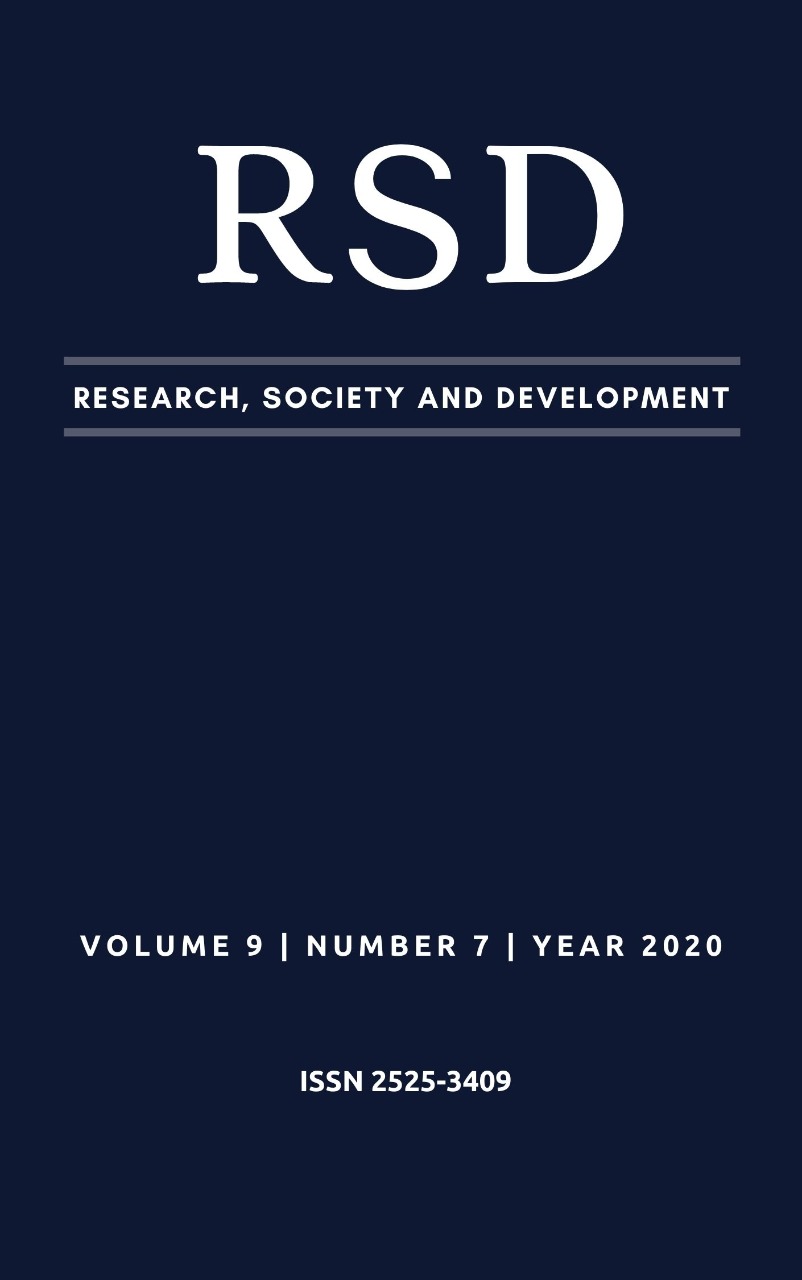Intensive short-term vocal therapy with Finger Kazoo in male teachers – case study
DOI:
https://doi.org/10.33448/rsd-v9i7.3863Keywords:
Acoustics, Phonation, Speech Therapy, Voice quality, Voice.Abstract
The aim of the study was to verify vocal, respiratory and self-assessment aspects of a group of teachers without laryngeal affections after intensive therapy with Finger Kazoo vocal technique. This is a case study with five adult male teachers evaluated before and after 15 sessions of intensive brief therapy with Finger Kazoo, with descriptive analysis. After therapy, most of the maximum phonation times increased, being within the normal range; the s/z and ė/e relations remained normal; the difference between the mean of the vowels and the count of numbers, as well as the sound pressure level, remained above normal; the upper limit of the dynamic extension has decreased; there were reductions in amplitude perturbation, noise and fundamental frequency measurements. In the Vocal Tract Discomfort Scale, there was a reduction in the frequency and intensity of sensations and symptoms; but in the Voice-Related Quality of Life Protocol, with the exception of the socioemotional score, and Vocal Handicap Index, there was worsening. It was concluded that in this group of male teachers, after intensive brief therapy with Finger Kazoo, there were positive results in measures of maximum phonation time, fundamental frequency, amplitude perturbation, noise, upper limit of dynamic extension and self-perception of vocal tract discomfort and socioemotional domain of the Voice-Related Quality of Life Protocol.
References
Andriollo, D.B., Bresolin, F.A., Frigo, L.F., Cielo, C.A. (2020). Treinamento fisioterapêutico intensivo do centro de força corporal: estudo de uma profissional da voz. Research, Society and Development, 9(3), e146932550.
Bastilha, G.R. (2015). Efeitos vocais imediatos da técnica Finger Kazoo em professoras disfônicas com e sem afecções laríngeas (Dissertação). Santa Maria: Universidade Federal de Santa Maria.
Behlau, M., Madazio, G., Feijo, D., & Pontes, P. (2013). Avaliação de voz. In: Behlau, M. Voz o Livro do Especialista. Rio de Janeiro: Revinter, 130-64.
Behlau, M., Zambon, F., Moreti, F., Oliveira, G., & Couto Jr, E.B. (2017). Voice self-assessment protocols: different trends among organic and behavioral dysphonias. Journal of Voice, 31(1), 112.e13–112.e27.
Christmann, M.K., & Cielo, C.A. (2017). Acoustic and auditory perception effects of the voice therapy technique Finger Kazoo in adult women. Journal of Voice, 31(3), 390.e9-390.e15.
Christmann, M.K., Gonçalves, B.F.T., Lima, J.P.M., Scapini, F., Bastilha, G.R., & Cielo, C.A. (2017). Controlled and randomized clinical trial of intensive short-term voice therapy with Finger Kazoo technique in teachers. Audiology - Communication Research, 22, e1791.
Christmann, M.K., Gonçalves, B.F., Lima, J.P.M., Scapini, F., Bastilha, G.R., & Cielo, C.A. (2017). Short and intensive therapy with Finger Kazoo in a patient with organic dysphonia post-orotracheal intubation. Distúrbios da Comunicação, 29(1), 41-54.
Cielo, C.A., & Christmann, M.K. (2014). Finger Kazoo: spectrographic acoustic modifications and vocal self-assessment. Revista CEFAC, 16(4), 1239-54.
Cielo, C.A., Frigo, L.F., & Christmann, M.K. (2013). Sound pressure level and maximum phonation time after Finger Kazoo technique. Revista CEFAC, 15(1), 994-1000.
Cielo, C.A., Lima, J.P.M., & Christmann, M.K. (2016). Comparison of effects of Finger Kazoo and tube phonation techniques in women with normal voice. Audiology - Communication Research, 21, e1554.
Hoffmann, C.F., Cielo, C.A., & Christmann, M.K. (2017). Effects of Kazoo Finger technique as the time of execution. Distúrbios da Comunicação, 29(3), 510-18.
Madazio, G., Moreti, F., & Yamasaki, R. (2014). Protocolos de autoavaliação do impacto da disfonia. In: Marquesan, I.Q., Silva, H.J., & Tomé, M.C. Tratado das Especialidades em Fonoaudiologia. São Paulo: Roca, 113-26.
Pinho, S.M.R. (2003). Definições e classificação vocal. In: Pinho, S.M.R. Fundamentos em Fonoaudiologia: tratando os distúrbios da voz. Rio de Janeiro: Guanabara Koogan, 3-7.
Pizolato, R.A., Rehder, M.I., Meneghim, M.C., Ambrosano, G.M., Mialhe, F.L., & Pereira, A.C. (2013). Impact on quality of life in teachers after educational actions for prevention of voice disorders: a longitudinal study. Health and Quality of Life Outcomes, 2(11), 28.
Putnoki, D.S., Hara, F., Oliveira, G., & Behlau, M. (2010). Voice-related quality of life: the impact of a dysphonia according to gender, age and occupational use of voice. Revista da Sociedade Brasileira de Fonoaudiologia, 15(4), 485-90.
Sampaio, M., Oliveira, G., & Behlau, M. (2008). Investigation of the immediate effects of two semi-ocluded vocal tract exercises. Revista Pró-Fono de Atualização Científica, 20(4), 261-6.
Servilha, E.A.M., & Roccon, P.F. (2009). Relation between voice and life quality for university teachers. Revista CEFAC, 11(3), 440-8.
Saxon, K.G., & Schneider, C.M. (1995). Vocal Exercise Physiology. San Diego: Singular Publishing Group.
Downloads
Published
Issue
Section
License
Authors who publish with this journal agree to the following terms:
1) Authors retain copyright and grant the journal right of first publication with the work simultaneously licensed under a Creative Commons Attribution License that allows others to share the work with an acknowledgement of the work's authorship and initial publication in this journal.
2) Authors are able to enter into separate, additional contractual arrangements for the non-exclusive distribution of the journal's published version of the work (e.g., post it to an institutional repository or publish it in a book), with an acknowledgement of its initial publication in this journal.
3) Authors are permitted and encouraged to post their work online (e.g., in institutional repositories or on their website) prior to and during the submission process, as it can lead to productive exchanges, as well as earlier and greater citation of published work.


